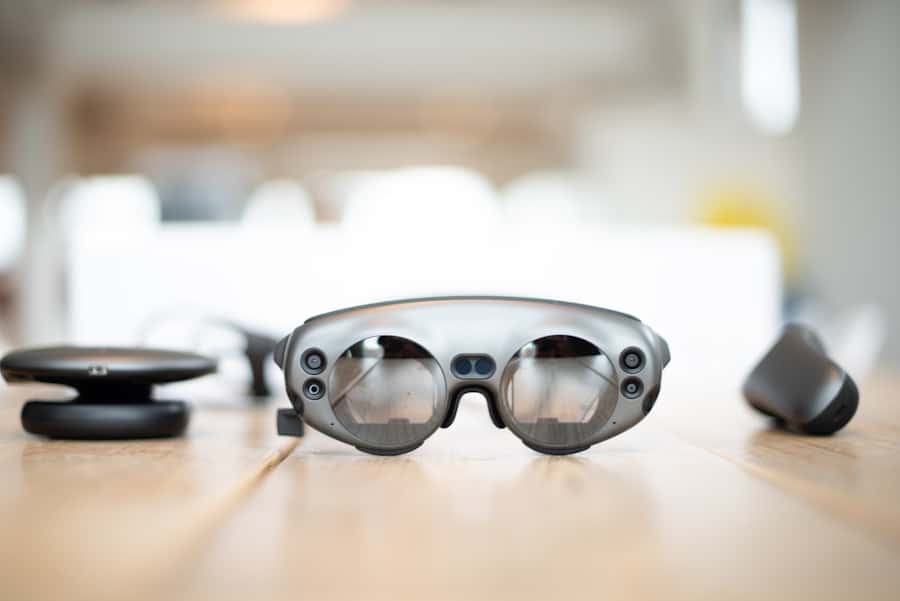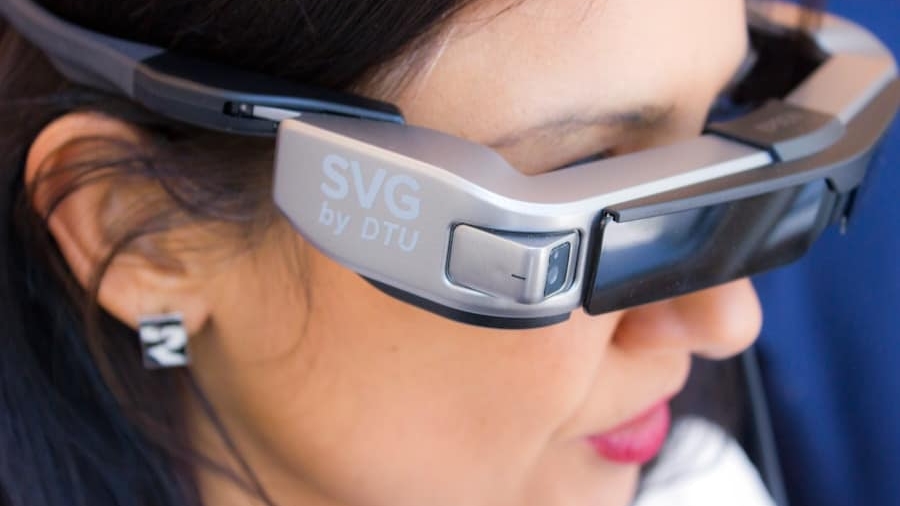Vision impairment encompasses a wide range of conditions that affect an individual’s ability to see clearly. This can include partial sight, where individuals may have some functional vision, to complete blindness, where no light perception is present. The World Health Organization estimates that approximately 2.2 billion people globally have vision impairment, with a significant portion of these individuals being elderly.
Common causes of vision impairment include cataracts, age-related macular degeneration, diabetic retinopathy, and glaucoma.
The impact of vision impairment extends beyond the physical limitations of sight.
It can significantly affect an individual’s quality of life, influencing their ability to perform daily tasks, engage socially, and maintain independence. For many, navigating the world without adequate visual cues can lead to feelings of isolation and frustration. As society becomes increasingly reliant on visual information—whether through reading, using technology, or participating in recreational activities—understanding the nuances of vision impairment is crucial for developing effective solutions that enhance accessibility and inclusivity.
Key Takeaways
- Vision impairment can range from mild to severe and can greatly impact daily living
- Smart glasses are wearable devices that can assist vision-impaired users in various ways
- Features of smart glasses include magnification, text-to-speech, object recognition, and navigation
- Smart glasses can enhance independence, safety, and accessibility for vision-impaired users
- The future of smart glasses for vision-impaired users holds potential for even more advanced features and applications
Introduction to Smart Glasses
Enhancing Lives for Vision-Impaired Users
For vision-impaired users, smart glasses can provide critical assistance by interpreting their surroundings and delivering information audibly or through haptic feedback. This technology has evolved significantly over the past decade, moving from niche applications to more mainstream solutions that cater to a broader audience.
Driving Innovation through AI and Machine Learning
The development of smart glasses has been driven by advancements in artificial intelligence (AI) and machine learning, which enable these devices to recognize objects, read text aloud, and even identify faces. Companies like Aira and OrCam have pioneered products specifically designed for individuals with vision impairments, showcasing how technology can bridge the gap between visual limitations and everyday experiences.
A Future of Greater Independence and Confidence
As smart glasses continue to evolve, they hold the potential to transform how vision-impaired individuals interact with their environment, fostering greater independence and confidence.
Features and Benefits of Smart Glasses for Vision-Impaired Users

Smart glasses come equipped with a variety of features tailored to assist vision-impaired users in navigating their surroundings more effectively. One of the most significant features is object recognition, which allows the glasses to identify everyday items such as food products, street signs, or even obstacles in the user’s path. This capability is often powered by sophisticated AI algorithms that analyze visual data captured by the device’s camera.
For instance, when a user approaches a grocery store shelf, the smart glasses can announce the names of products or provide information about their nutritional content. Another essential feature is text-to-speech functionality, which enables users to read printed materials effortlessly. By simply pointing the camera at a book or a menu, the smart glasses can convert text into spoken words, allowing users to access information that would otherwise be challenging to read.
This feature not only enhances independence but also promotes social inclusion by enabling users to participate in conversations and activities that require reading. Additionally, many smart glasses offer navigation assistance through GPS integration, providing auditory directions that help users move confidently through unfamiliar environments. The benefits of smart glasses extend beyond mere functionality; they also contribute to improved quality of life for vision-impaired individuals.
By facilitating greater independence in daily tasks—such as shopping, reading, and navigating—these devices empower users to engage more fully with their communities. Furthermore, the social implications are profound; as users gain confidence in their ability to interact with the world around them, they are more likely to participate in social activities and maintain relationships with family and friends.
How Smart Glasses Enhance Daily Living for Vision-Impaired Users
The integration of smart glasses into the daily lives of vision-impaired users can lead to transformative changes in how they approach routine activities. For example, consider a user who relies on public transportation. With smart glasses equipped with navigation features, they can receive real-time updates about bus or train schedules and directions to their destination.
This capability not only reduces anxiety associated with travel but also fosters a sense of autonomy that is often compromised by vision impairment. In social settings, smart glasses can facilitate interactions that might otherwise be challenging due to visual limitations. For instance, during a dinner party, a user can utilize the text-to-speech feature to read menus or labels on food items without needing assistance from others.
This fosters a sense of inclusion and allows for more meaningful conversations about food choices and preferences. Moreover, the ability to recognize faces can enhance social interactions by allowing users to identify friends or acquaintances in various settings, further promoting engagement and connection. The impact of smart glasses on daily living extends into professional environments as well.
Vision-impaired individuals can leverage these devices to perform tasks that require reading documents or accessing digital content on screens. In workplaces where visual information is paramount, smart glasses can serve as an invaluable tool for enhancing productivity and ensuring that employees with vision impairments can contribute effectively to their teams.
The Future of Smart Glasses for Vision-Impaired Users
As technology continues to advance at an unprecedented pace, the future of smart glasses for vision-impaired users looks promising. Ongoing research and development efforts are focused on enhancing the capabilities of these devices while making them more accessible and user-friendly. Innovations in AI are expected to lead to even more sophisticated object recognition systems that can identify a broader range of items and provide contextual information about them.
For instance, future iterations may be able to recognize not just objects but also interpret emotions based on facial expressions. Moreover, advancements in battery life and miniaturization will likely result in lighter and more comfortable designs that users can wear for extended periods without discomfort.
Imagine a scenario where smart glasses provide real-time translations of foreign signs or menus while traveling abroad—this level of functionality could significantly enhance the travel experience for vision-impaired individuals. Collaboration between tech companies and organizations focused on accessibility will be crucial in shaping the future landscape of smart glasses. By involving vision-impaired users in the design process and gathering feedback on their experiences, developers can create products that truly meet their needs.
As awareness grows about the potential of smart glasses to improve quality of life for those with vision impairments, we may see increased investment in this area, leading to more innovative solutions that empower users.
Challenges and Limitations of Smart Glasses for Vision-Impaired Users

Financial Barriers
Many smart glasses designed for assistive purposes come with a hefty price tag that may be prohibitive for some individuals or families. While insurance coverage may help alleviate some financial burdens, not all plans include assistive technology as part of their benefits.
Usability and Learning Curve
Another challenge lies in the usability and learning curve associated with new technology. While many users may be eager to adopt smart glasses, they may face difficulties in understanding how to operate them effectively. This is particularly true for older adults who may not be as familiar with digital devices or who may have additional cognitive challenges related to aging. Comprehensive training programs and user-friendly interfaces will be essential in ensuring that all potential users can benefit from these advancements.
Privacy Concerns
Privacy concerns also pose a significant challenge for smart glasses equipped with cameras and microphones. Users may feel apprehensive about being recorded or monitored while wearing these devices in public spaces. Addressing these concerns through transparent policies regarding data usage and privacy protections will be crucial in fostering trust among potential users.
Tips for Choosing the Right Smart Glasses for Vision-Impaired Users
Selecting the right pair of smart glasses for vision-impaired users involves careful consideration of various factors tailored to individual needs and preferences. First and foremost, it is essential to assess the specific features required based on the user’s level of vision impairment and daily activities. For instance, someone who primarily needs assistance with reading may prioritize text-to-speech capabilities over advanced navigation features.
Comfort is another critical aspect when choosing smart glasses. Since these devices are worn for extended periods, it is vital to select a model that fits well without causing discomfort or strain on the face or ears. Trying on different models before making a purchase can help ensure a proper fit and comfort level.
Additionally, consider the device’s battery life and ease of charging. Users should look for smart glasses that offer sufficient battery life for their daily activities without requiring frequent recharging throughout the day. Finally, it is advisable to seek out user reviews and testimonials from others who have experience with specific models; this feedback can provide valuable insights into performance and reliability.
The Impact of Smart Glasses on the Lives of Vision-Impaired Users
The advent of smart glasses has ushered in a new era of possibilities for individuals living with vision impairments. By harnessing cutting-edge technology to enhance everyday experiences, these devices have the potential to significantly improve quality of life for users across various domains—from personal independence to social engagement and professional productivity. As advancements continue in this field, it is essential to remain mindful of the challenges faced by users while striving for solutions that prioritize accessibility and inclusivity.
The ongoing dialogue between developers, users, and advocacy groups will play a pivotal role in shaping the future landscape of smart glasses for vision-impaired individuals. By fostering collaboration and innovation within this space, we can work towards creating a world where everyone—regardless of their visual abilities—can navigate their environment with confidence and ease. The impact of smart glasses extends far beyond mere functionality; they represent hope and empowerment for millions seeking greater independence in their daily lives.
In a recent article on Enicomp, it was reported that a Cryptopunks NFT bundle sold for a staggering $17 million in a Christie’s auction. This highlights the growing popularity and value of digital assets in today’s market. The Role of Smart Glasses in Aiding Vision-Impaired Users showcases how technology can be used to improve the quality of life for individuals with visual impairments. The article discusses the various features and benefits of smart glasses in assisting users with everyday tasks and enhancing their overall independence. It is fascinating to see how advancements in technology, such as NFTs and smart glasses, are shaping our world in new and innovative ways. Read more about the Cryptopunks NFT bundle auction and how it relates to the evolving landscape of digital assets.
FAQs
What are smart glasses?
Smart glasses are wearable devices that incorporate a display and computing capabilities to provide information to the user. They can be used for various purposes such as augmented reality, navigation, and communication.
How do smart glasses aid vision-impaired users?
Smart glasses can aid vision-impaired users by providing them with visual assistance through features such as magnification, text-to-speech conversion, object recognition, and navigation assistance. These features can help vision-impaired users to better navigate their surroundings and access information.
What are the benefits of using smart glasses for vision-impaired users?
The benefits of using smart glasses for vision-impaired users include improved independence, enhanced access to information, increased mobility, and improved quality of life. Smart glasses can help vision-impaired users to perform daily tasks more effectively and efficiently.
What are some examples of smart glasses for vision-impaired users?
Examples of smart glasses for vision-impaired users include OrCam MyEye, eSight, and NuEyes. These devices incorporate advanced technology to provide visual assistance and improve the daily lives of vision-impaired individuals.
Are there any limitations to using smart glasses for vision-impaired users?
Some limitations of using smart glasses for vision-impaired users include cost, technical complexity, and potential discomfort when wearing the device for extended periods. Additionally, the effectiveness of smart glasses may vary depending on the specific needs and preferences of the individual user.

